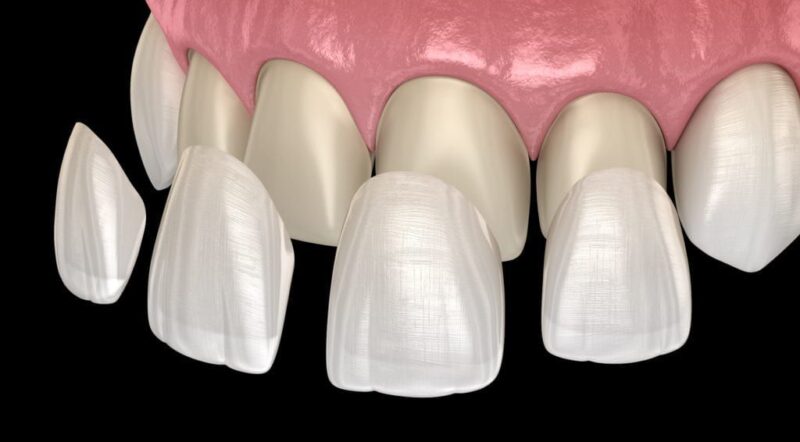Dental veneers are thin shells that adhere to the front surface of the teeth to improve appearance. They are a popular choice for people with dental imperfections such as broken, chipped, discolored, and smaller-than-average teeth. Some people may only need one veneer, but six to eight Temecula veneers are better for creating a symmetrical smile. There are different veneers, including porcelain, composite resin, and no-prep veneers. Your dentist can help determine the one that best suits you.
Dental veneer procedure
Usually, you need three visits to your dentist for veneers. The first visit is mainly for consultation and the second and third making and applying veneers, respectively. During the consultation, you will inform your dentist of the results you are trying to achieve. Discussing your expectations is necessary to avoid surprises or disappointment after getting veneers.
Your dentist also examines your teeth to ensure veneers are a good option for you. If you have serious problems such as gum disease, you may need treatment before getting veneers. Your provider also checks your tooth structure to ensure adequate enamel since small amounts of enamel need to be removed before veneers are bonded. Having worn-out teeth compromises the effectiveness of the treatment.
Teeth misalignment causes problems in the placement of porcelain veneers; therefore, you may need orthodontic treatment before getting veneers.
Your provider may discuss with you the downsides of veneers. For example, veneers are permanent, meaning they cannot be undone once cemented. Your teeth may become sensitive due to enamel removal before veneer placement. These coverings may also not match the color of your natural teeth, and the shade can’t be altered once the veneers are in place.
Preparing for veneers

After your dentist establishes you are a good candidate for veneers, they will reshape your tooth surface to create room for the shells. Preparation involves scraping off the enamel, which is nearly equal to the thickness of the veneer. Your provider may or may not numb the area before trimming the enamel. Your dentist then makes an impression or model of your tooth and sends it to a dental laboratory. As you wait for your veneers, your provider may send you home with temporary veneers.
The bonding process
During the third and last appointment, your doctor places the veneer on your tooth to ensure the fit and color are correct. The dentist may trim the veneer to achieve proper fit before permanently cementing it on your tooth. Next, the dentist cleans, polishes, etches your tooth for the veneer to strongly bond to the tooth. Your provider then applies a special adhesive on your tooth before placing the covering.
Once the veneer is in place, the dentist may use laser light to activate the chemicals in the cement, causing it to harden quickly. Finally, the dentist removes any extra adhesive, checks your bite, and makes any necessary adjustments. After a few weeks, you may need to see your dentist to check your gums and veneer’s placement.
If you have further questions about veneers, consult your dentist at Sunshine Dental, Inc.


